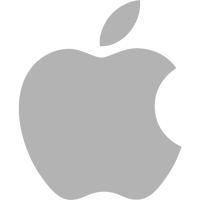
Do you have a question about the Apple GarageBand and is the answer not in the manual?
| Developer | Apple Inc. |
|---|---|
| Initial Release | January 6, 2004 |
| Operating System | macOS, iOS, iPadOS |
| Type | Digital audio workstation |
| License | Proprietary |
| Audio Engine | Core Audio |
| Audio Units Support | Yes |
| MIDI Support | Yes |
| Virtual Instruments | Yes |
| Audio Recording | Yes |
| Loop Library | Yes |
| Music Lessons | Yes |
| Latest Version (iOS/iPadOS) | 2.3.14 |
| File Format | .band |
| Supported Plugins | Audio Units (AU) |
| Sharing Options | Mail, Messages, AirDrop |
| Included Instruments | Virtual instruments, drum kits, guitar amps, and effects |
Overview of the document's purpose and content.
Highlights new features and improvements in GarageBand.
Instructions and tips for effectively following the manual.
Explains the main components and layout of the GarageBand window.
Details the timeline's role in arranging musical regions and playback.
Describes the editor for waveform and notation views.
Covers finding and managing loops using the loop browser.
Details settings for instruments, effects, and track inputs.
Steps to create, save, archive, and export GarageBand songs.
Configuring tempo, time signature, and key for new songs.
Procedures for opening existing songs and saving changes.
Navigating the loop browser to discover musical loops.
Exploring loops using button view and column view.
Listening to loops and refining search results.
Regions as building blocks for song arrangement.
Selecting, copying, pasting, looping, resizing, and moving regions.
Transposing regions and fixing timing of software instruments.
Methods for dividing, combining, and renaming musical regions.
Creating and setting up tracks for recording real instruments.
Steps for recording audio from instruments and microphones.
Adjusting instrument, input, and volume settings.
Checking instrument tuning and importing audio files.
Playing and recording software instruments via computer keyboard or virtual keyboard.
Steps for recording MIDI data from keyboards or virtual instruments.
Adjusting instruments and effects for software instrument tracks.
How to select regions within the editor for modification.
Moving, cropping, and joining audio regions.
Improving tuning and timing of real instrument recordings.
Modifying pitch, duration, and timing of MIDI notes.
Editing pitch bend, modulation, and sustain data.
Introduction to standard music notation elements in GarageBand.
Adding, moving, copying, and changing notes in notation.
Adjusting note pitch, duration, and velocity.
Using pedal symbols to control sustain in notation.
Balancing track volumes and stereo panning.
Automating volume and pan changes over time.
Controlling master output and adding fade ins/outs.
Changing song key and applying audio effects.
Customizing effect parameters and choosing presets.
Keyboard shortcuts for playback control and track management.
Shortcuts for editing, arranging, and recording actions.
Shortcuts for displaying windows, editors, and menu functions.
How to connect audio hardware to your computer for recording.
Connecting MIDI keyboards for software instrument playback.
Setting up audio interfaces as input devices in GarageBand.